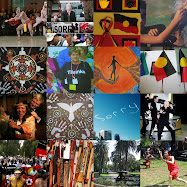
A thermos and a good book - what more could you want at lunchtime?



 A windy day at Wollongong - looking south towards industrial Port Kembla from Endeavour Drive at Lions Park.
A windy day at Wollongong - looking south towards industrial Port Kembla from Endeavour Drive at Lions Park.


 The front of the temple complex - underneath, a lovely tea house, and above, a dining hall, meditation hall, reeception room, front shrine. Visitors are welcome to eat in the dining hall, where a couple of delicious vegetarian selections are cooked every day. The temple complex is built in the Chinese palace style, and some of these views reminded me of photos I've seen of Tibet. Then I read the info below on Wikipedia.
The front of the temple complex - underneath, a lovely tea house, and above, a dining hall, meditation hall, reeception room, front shrine. Visitors are welcome to eat in the dining hall, where a couple of delicious vegetarian selections are cooked every day. The temple complex is built in the Chinese palace style, and some of these views reminded me of photos I've seen of Tibet. Then I read the info below on Wikipedia. 
 Incense plays a role in many religions. I'm not familiar with the tenets of Buddhism, so I had to look up the meaning of incense in that religion. Apparently, incense symbolises the fragrance of pure moral conduct and reminds us to cultivate good conduct.
Incense plays a role in many religions. I'm not familiar with the tenets of Buddhism, so I had to look up the meaning of incense in that religion. Apparently, incense symbolises the fragrance of pure moral conduct and reminds us to cultivate good conduct.
 Left: There is no escaping the fact that Wollongong is a major industrial city, most famous for its steel works in the suburb of Port Kembla. I took the photo looking towards the sea and Port Kembla from the first platform of the pagoda.
Left: There is no escaping the fact that Wollongong is a major industrial city, most famous for its steel works in the suburb of Port Kembla. I took the photo looking towards the sea and Port Kembla from the first platform of the pagoda.

 Nan Tien's Pagoda is a resting place for the cremated ashes of devotees and their relatives; it can accommodate the remains of over 7,000 people. Inside the Pagoda is a wishing bell, visitors may make a wish and sound the bell."
Nan Tien's Pagoda is a resting place for the cremated ashes of devotees and their relatives; it can accommodate the remains of over 7,000 people. Inside the Pagoda is a wishing bell, visitors may make a wish and sound the bell."



 Lumbini means "the lovely", and is located in the foothills of the Himalayas in Nepal.
Lumbini means "the lovely", and is located in the foothills of the Himalayas in Nepal.

 Nan Tien means "Southern Heaven Temple". It is one of the branch temples of Fo Guang Shan, founded in 1967 in Taiwan. There are over 120 branches worldwide.
Nan Tien means "Southern Heaven Temple". It is one of the branch temples of Fo Guang Shan, founded in 1967 in Taiwan. There are over 120 branches worldwide. For the next few days we are going to be visiting the Nan Tien Buddhist temple, not far south of Sydney in Berkeley, a suburb of Wollongong. Wollongong is linked to Sydney by freeway and rail and is part of Sydney's commuter belt.
For the next few days we are going to be visiting the Nan Tien Buddhist temple, not far south of Sydney in Berkeley, a suburb of Wollongong. Wollongong is linked to Sydney by freeway and rail and is part of Sydney's commuter belt.
 On April 3 this year, I published the photo at left - a colourful bougainvillea in early autumn, a last flush from summer.
On April 3 this year, I published the photo at left - a colourful bougainvillea in early autumn, a last flush from summer. 


 The original school house at Arncliffe Public School , dating from about the 1860s, sits in the playground of the now much larger school, surrounded by Victorian buildings, 20th century wooden additions and a late 20th century library (not shown).
The original school house at Arncliffe Public School , dating from about the 1860s, sits in the playground of the now much larger school, surrounded by Victorian buildings, 20th century wooden additions and a late 20th century library (not shown).









